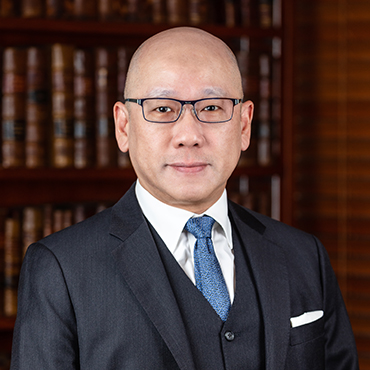香港特別行政區 v 鄒幸彤 [2023] 3 HKC 158, [2022] HKCFI 3692 (Robert Pang SC)
Robert Pang SC and Chris Ng represented the appellant in 香港特別行政區 v 鄒幸彤 [2023] 3 HKC 158, [2022] HKCFI 3692.
On 27 May 2021, the police issued a notice of prohibition of public meeting under s 9 of the Public Order Ordinance (Cap 245) to prohibit the Hong Kong Alliance in Support of Patriotic Democratic Movements of China (‘the Alliance’) from holding a public meeting at Victoria Park in the evening of 4 June 2021 on the ground of the situation of the Covid-19 pandemic. The Appeal Board on Public Meetings and Processions dismissed the appeal brought by the Alliance against the prohibition by the police on 29 May 2021. On 29 May 2021, the Security Bureau announced that since the police had prohibited the meeting at Victoria Park and the Appeal Board had affirmed the decision of the police, that meeting was therefore an unauthorized assembly, and no one may participate or propagate its holding, or otherwise he or she would contravene the law. The appellant placed posts at social media on the same date and also published an article in a newspaper on 4 June 2021. The appellant was prosecuted of one charge of inciting others to participate knowingly in an unauthorized assembly in relation to the publication of these three articles. She was convicted after trial and sentenced to 15 months’ imprisonment. The appellant appealed against conviction and sentence.
Held, allowing the appeal, setting aside conviction and sentence:
- (1) Under a general measure, a citizen could be prosecuted without an opportunity to appeal against the notice of prohibition of public meeting, so the statutory interpretation should allow citizens to challenge the legality of the general measure. The notice of prohibition of public meeting in the present case was a general measure, not against any individual citizen who did not comply with the notice. The appeal mechanism under the Public Order Ordinance (Cap 245) could not have provided an opportunity for ordinary citizens such as the appellant to appeal against the notice, as only specified persons could lodge an appeal. Therefore, on the true construction, the Public Order Ordinance allowed the appellant to challenge the legality of the said notice in the criminal trial. Boddington v British Transport Police [1999] 2 AC 143; [1998] 2 All ER 203; [1998] 2 WLR 639; Secretary for Justice v Latker [2009] 2 HKC 100; and Secretary for Justice v Ocean Technology & Ors [2009] 1 HKC 271 considered (para 44).
- (2) The evidence showed that the police primarily considered the expected number of people at the meeting, and whether social distancing requirements would be effective. Although the organiser of the public meeting had indicated the intention to comply with any reasonable demand from the police, the police only raised questions without seriously considering or proposing a series of measures or conditions obviously fit for consideration such as setting limits on the time periods of entry, the number of people, the locations for dispersal, requiring participants to use the LeaveHomeSafe App and wearing masks, prohibiting the intake of food or drink, etc, in order to control the actual risk of transmission of the virus. The police did not fulfill its positive duty under s 9(4) of the Public Order Ordinance to consider whether there were any other feasible measures allowing and facilitating the holding of the public meeting. The Appeal Board and the trial magistrate accepted that the pandemic concern was the reason for issuing the notice of prohibition of public meeting, but neither of them considered the feasibility of other measures or conditions. Therefore, the prosecution failed to establish the legality of the notice of prohibition of public meeting. As the legality of the notice of prohibition of public meeting was not established, it was not an offence even if the appellant appealed to others to meet at the subject location. Leung Kwok Hung & Ors v HKSAR [2005] 3 HKLRD 164; (2005) 8 HKCFAR 229; [2005] HKCU 887; and James v Director of Public Prosecutions [2016] 1 WLR 2118 considered (paras 60-64, 67).
[The above is excerpted from the headnote to the report in HKC.]


